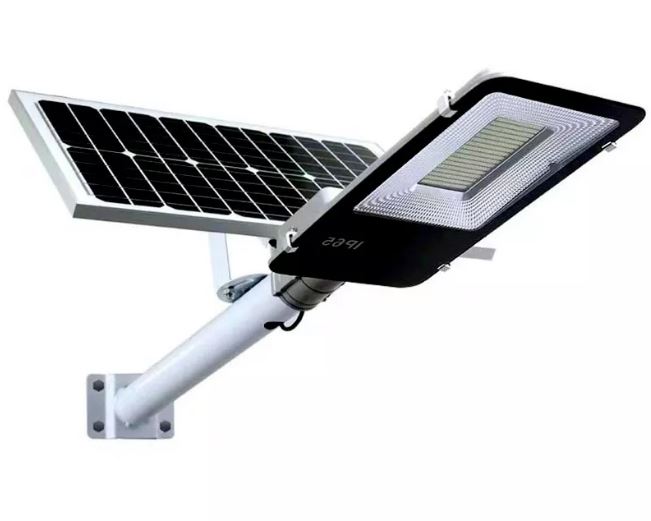Last updated on August 11th, 2024 at 09:53 am
The truth is, new technology in solar power generation, has become one of the main alternative sources of energy. As a matter of fact, this industry continues to grow, with key players developing better technologies every year.
But, the truth is:
The cry about pollution and the unsustainability of most energy sources such as fossil fuels and nuclear energy has been a worry for long.
As the population of the world continues to soar high, the fear has been that these resources will soon be depleted, leaving mankind with nothing to power his car, no electricity to light the house and many more problems.
The advent of solar technology however brought and has continued to bring hope, not only on sustainability but also many other aspects in which solar energy has proven stronger and better than the rest
What is Solar Energy?
Solar energy refers to the heat and light that is radiated from the sun to the earth. Only approximately a billionth of the sun’s total radiation reaches the ground. This radiation can be captured using two technologies.
Sunlight is captured using a technique known as Photovoltaics (using Photovoltaic Cells), while heat is captured using Concentrated Solar Power technology (CPS).
Using Photovoltaics (PV), sunlight is harnessed to generate electricity, while CPS is used to harness the sun’s heat into thermal energy for powering turbines and heaters.
Advantages and Disadvantages of Solar Energy
Advantages of New Technology in Solar Power Generation
1. It is a Renewable source of energy
This means that we can never run out of solar power. As long as the sun exists, solar energy will always be available day-in-day-out. All the other energy sources face expiry at some point, but solar energy will always be here for as long as the sun exists.
2. Always available in abundance
The earth can never use all the solar radiation it receives. In fact, the amount of energy used on earth is 20,000 times less than what the sun radiates into its surface, which is about 120,000 terawatts of radiation.
3. It is sustainable
We can never overuse solar power so that the future generation lacks what to use. In fact, tomorrow’s solar energy always comes in full, regardless of how much we use today.
4. A wide range of uses
Solar power has several different uses. It can be used to generate electricity, which in itself has several uses. Of course, this is alongside harnessing heat energy which is commonly used in thermal water heaters.
Furthermore, satellites also depend on solar energy for power.
With the new innovations in the solar power technology, even building materials can generate energy.
Video curtesy: CNET
5. Environmentally friendly
Solar energy technology does not involve any combustion of fuels. In fact, the harnessing of solar energy does not lead to any pollution at all. Whereas there is some pollution during the production and transportation of the panels and other appliances, this is usually negligible compared to the other alternative energy sources.
Solar power is also a silent power. Unlike other green tech energy like wind turbines which make a move and make a lot of noise, solar energy does not involve any movement or sound.
6. Available for all
The sun’s energy reaches every country and every home without having to go through another. Every country (and even individual/home) can harness and use its energy without having to import the radiation from another.
7. Affordable energy
Solar energy is relatively cheaper when compared to hydro-electricity and other energy sources. The only major costs for an individual intending to use solar energy is the installation cost. Next, the maintenance costs are usually very minimal.

Disadvantages of New Technology in Solar Power Generation
1. Expensive
Although solar energy is cheap in the long run, the initial costs can be very high. In fact, the original prices of solar panels are usually so high that many governments have had to incentivize them so as to enhance affordability.
2. Requires Space
Solar panels, especially the utility-scale PVC systems, usually require many acres of land. Some panels need up to 16 hectares per megawatt.
3. Intermittency
Solar energy is solely dependent on the sun. That means that whenever there are clouds and during the night, the production of solar energy is curtailed entirely.
4. The high cost of storage
Solar energy is complicated and expensive to store. The batteries that are used to save solar energy can sometimes be costly and require careful handling if they are to last long. Converting DC to AC requires inverters, which increase the cost of solar energy
5. Pollution
Solar energy itself has zero pollution effect. However, the process of manufacturing the panels usually leads to hazardous greenhouse emissions such as sulfur hexafluoride and nitrogen trifluoride.
6. Fragility
Although solar panels have low maintenance costs, they are generally very fragile; hence there is a need for extra caution in handling them.
Types of Solar Energy
A general way of classifying solar energy is by categorizing it into two as either active or passive solar energy, based on how it is used. Active power is that which is used to create either electricity or to generate heat. Passive solar energy, on the other hand, is that which is absorbed directly, for example by the human body as warmth.
However, when you talk of the types of solar energy, the focus is usually on the active forms, which are classified into two. They are named based on the technology used to capture the sun’s radiation and harness it into the usable form of energy. These are photovoltaic and thermal energy:
1. Photovoltaic Energy technology
This is a solar energy technology which uses semiconductor cells to convert sunlight into electricity. A photovoltaic panel comprises of many cells that produce direct current when hit by light particles (photons) from the sun. The photons excite and displace electrons on the semiconductor elements, thus generating to electricity.
2. Solar thermal technology
This one captures and uses the sun’s heat directly, or converts it into mechanical energy thereby again converting it to electricity. It is therefore classified into:
- Low-Temperature Solar Thermal Power-this technology produces heat from the sun’s rays and uses it directly, for example in hot water heating.
- Concentrated Solar Power (CSP). This technology uses the sun’s heat to heat transfer fluid like molten salt or oil. The fluid is then used to heat water to produce steam, which is in turn used to drive turbines for the generation of electricity-
Uses of New Technology in Solar Power Generation
There are several uses of solar energy. Here are some of the very common ways in which solar energy can be utilized.
· Battery chargin
The photoelectric solar panels generate Direct Current (DC). It is, therefore, able to charge batteries directly, and is used to charge phones, laptops and other batteries
· Indoor lighting
Solar energy is used to charge batteries during the day when the sun is on. The charged battery can then be used for lighting both during the day and at night. Today, there are many solar lights in the market.
· Water heating
Using a rooftop cell, the sun’s heat is absorbed and transferred to the water tank. Solar energy is also used in the heating of swimming pools by pumping the water to a central tank where it is heated and then pumped back to the pool
· Heating homes
Solar energy is also used to heat homes, especially using the Forced Hot Air system
· Portable solar charges
The availability of portable solar PV chargers has made it possible always to charge our portables wherever we go with them. This system is used in phones and watches, among other portable devices.
· Solar Transport
This trending technology is also one of the most promising in the transport sector, owing to its environmental friendliness. Cars, buses, trains, and even subways and railway tracks can be fitted with solar panels to power the transport machines. In fact, the first solar-powered aircraft has just recently made its debut flight, and it is just awesome to see how far this will go.
· Cooking
It is simple: shiny substances like foil are fitted into a container and used to concentrate the rays from the sun into a cooking chamber. The heat developed is sufficient to cook a meal within your desired time.
· Outdoor and Street lighting
Today, street lighting in many countries is going solar. The technology is simple and cost-effective in the long run. A solar panel is fitted on the roof of the pole and connected to a storage battery, which can either be suspended on the pole or dug right under it. During the day, the panels are charged and the battery powers the lamp at night.
New Solar Technology Breakthroughs
Solar power has over the years seen significant developments in all areas, starting from solar cell manufacturing to solar energy storage, all the way to solar application.
Let’s explore some of these landmark breakthroughs in new technology in solar power generation:
1. Improvements in Solar Cell Technology
· Flexible Solar Panel
The standard solar panel is made up of silicon wafers, about up to 200 micrometers thick. This thickness means the panels cannot be flexible unless the silicon wafers are significantly sliced down. However, a more efficient way of attaining flexible solar panels has recently been discovered, which involves using organic materials with grapheme electrodes. This new invention relies on graphene’s flexible and transparent nature to overcome the limitations caused by the brittleness of typical electrodes.
2. Breakthrough in Solar Cell Manufacturing
Most of the solar panels that are available today are dependant on silicon semiconductors for converting sunlight into electricity. However, new and cheaper technology is coming up that will use cadmium telluride in the solar cells.
Owing to the instability that cadmium telluride sometimes presents during manufacturing, researchers are coming up with an even safer and cheaper option of using magnesium chloride. It is merely recovered from seawater, which makes it very affordable. It Is expected that the introduction of this material will increase solar cell efficiency by up to thirteen percent.
3. New Solar Applications
The general knowledge is that solar panels are mounted on rooftops, or laid on vast acres of land. This has been a major worry because there will not always be adequate land, and rooftops may sometimes limit the space on which the panels are to be laid. To tackle this, scientists have come up with wonderful ways of solar application.
· Floating solar
To answer the question of inadequate land for putting the large panels, scientists are working on installing solar panels that float on water. Most of the earth surface is covered with water which can, therefore, carry huge panels without any strain
· Solar Roadways
This technology is already running in the Netherlands. Solar panels are laid on roadways, and they supply large amounts of solar energy (electricity) to the grid. The installation of solar panels on the subways helps to ease the pressure on land.
· Space Solar
Another means of curbing the pressure on land is by deploying solar panels into space. This technology not only helps manage land coverage but also ensures optimum capturing of sunlight.
4. Storage Breakthrough
Although solar energy is available in abundance, most of it is wasted. This happens because most of the batteries available in the market are either too expensive or too inefficient or both. Another problem with the cells is that they usually have a very short lifespan.
To solve this, scientists have been working on different options for solar electricity storage.
- Built-in Batteries-Scientists from the United States have recently created a battery that is in-built within the solar panel. This will significantly reduce the costs, compared to when acquiring the batteries separately.
- Molten Salt Technology-this technology was recently launched by a Novatec Solar. It involves using inorganic salts in transferring energy from the PV systems to solar thermal by means of heat transfer fluids instead of oil. This will enable solar plants to operate at temperatures as high as 500 0C, leading to greater power output. This will lead to a significant reduction in solar energy storage costs.
5. Solar panels for the night
Scientists at the Idaho National Laboratory have been working on very thin solar film that once fully developed, will be cheaper and more flexible than the current films, enabling them to capture solar energy even after sunset.
This technology is known as nanotechnology because it is attaching nanoantenna-square conductor metal spirals onto a plastic sheet. Nanoantenna has the ability to absorb infrared energy which is released beyond sunset, making them more efficient.
How does a Solar Panel Work?
The creation of electric fields achieves the functioning of a solar panel. Solar panels are made up of several photovoltaic cells, which convert light into electricity.
The photovoltaic cells absorb radiation from the sun. When the radiation comes into contact with the silicon cells, it causes the movement of electrons. This movement leads to the separation of opposite charges. These opposite charges are generated by doping silicon with other materials, which creates positive or negative electrical charges which, when separated, leads to an electric field. This movement, therefore, leads to the generation of electricity, which is then picked up by the wires. The electricity produced is DC, which is then channeled to the inverter to convert it into AC. The electricity is then channeled through the different sections where it is used for different purposes.
Solar Panel Technology Advances
Many people solar panels to lower the aesthetic value of their homes. As new technology in solar power generation advances, solar panels are now becoming customizable. It is now possible to give the solar panel the appearance of your roof, while still maintaining its efficiency.
Solar Powered Roads
Solar panels are laid along the walkway to trap solar energy and generate electricity. The electricity is used to light led bulbs to light the roads at night. In the United States, the solar panels along the roads are also used to melt snow during the winter.
Mobile/Wearable Solar
Mobile solar has been here for a long time. However, new developments have emerged leading to the innovation of solar textiles. These are clothing that are fitted with tiny solar panels. This technology now makes it possible to incorporate solar into home textile products like door and window curtains.
The Future of Solar Energy
Current trends in the new technology in solar power generation point towards more adoption of solar energy. Owing to its environmental friendliness and other advantages as earlier mentioned, solar energy is quickly overtaking the other conventional forms of energy. However, what we have seen so far might as well just be a tip of the iceberg. The following are some of the likeliest developments to expect in solar.
1) Bio-solar cells
Research has found out that bacteria, especially cyanobacteria, can play a significant role in powering wireless devices. It is strongly believed that bio-cells will help to power rural areas, because these areas may not always be able to keep changing storage batteries
2) Wireless Power
The amount of power collected increases as you move closer to the sun. Scientists from Japan are therefore working towards sending solar panels to somewhere near the orbit of the earth. Once the panels are sent, the power collected will then be transmitted wirelessly via microwaves to the base station
3) Energy Harvesting Trees
Finish researchers are working towards making a 3D printed tree with leaves that are able to store solar energy. The intention is to use these leaves to power appliances. The trees will be able to survive both indoors and outdoors
4) Improved Efficiency
Researchers are also working on capturing the infrared spectrum. This will ensure that the infrared, which currently goes to waste because the current panels cannot tap it, will be converted into useful energy once this feature is incorporated into the solar energy technology
5) Floating Panels
As discussed earlier, several solar technology companies are now working towards laying large solar panels in the oceans. This has in fact already been implemented in the UK and is due for roll-out in many other countries.
Top Solar Panel Brands in the Global Market
Solar panels can be ranked using different strengths. most prominently, They can be rated based on efficiency, materials warranty, and temperature coefficient
· Based on Efficiency
Efficiency refers to how the solar panel does convert sunlight into electricity. SunPower is the most efficient solar panel with 22.2% efficiency. The second most efficient solar panel is LG, with 21.1%, followed by Panasonic at 20.3%.
· By Material Warranty
This warranty usually protects the solar panel against failures related to manufacturing defects or environmental factors. The solar panel with the most extended warranty are LG, Panasonic, Silfab, Solaria, and SunPower. All these come with a warranty of 25 years
· By Temperature Coefficient
This is the measure of the impact of hot temperature on the production capacity of the solar panel. The lower the temperature coefficient of a solar panel-the better the panel. Based on temperature coefficient, the best solar panel brands are: Panasonic (-0.26), Stion (-0.26), Silevo (-0.27), Hanwha (-0.28) and SunPower (-0.29)
As the world rapidly adopts solar technology, it is essential that more serious research be done, so as to increase the adaptability of, and adaptability to this technology. Of highest concern is the need to find ways of reducing the initial/installation costs, so as to make solar technology available to the vast majority of the world’s population.
If well developed, new technology in solar power generation will continue to take the energy sector by storm.
Evidently, the future is solar as an alternative source of energy!
More Resources:

